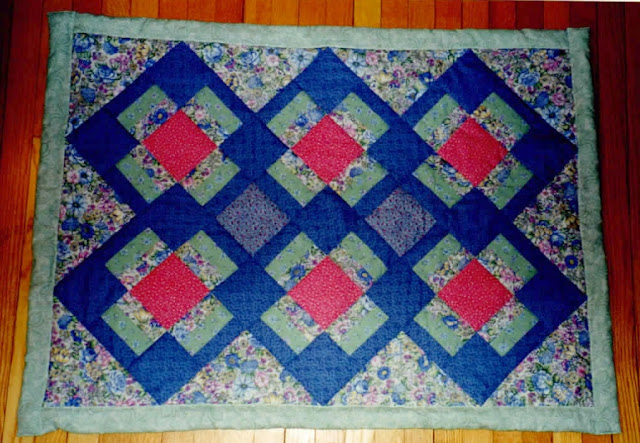Linen Closet: Working Small for Baby (2 of 2)
Linen Closet- Working Small (2 of 2)
Having finished the matching quilts, I found I had over bought on the fabric… substantially. Even the trick of using the remaining fabrics for the backing didn’t get rid of it all! (You begin to get the picture of how much extra there was.)
There was also a sense that I hadn't really done this block unit justice. What would the effect be if the color configuration was consistent throughout the top? The crib quilt was a perfect size for testing out dominant colors.
Smaller projects are always a good way to experiment and gain proficiency. They come together faster and, if it doesn't work out as planned, you have invested less time and energy than you would on a larger project; it's easier to move on to the next challenge.
It turns out this is a tried and true method used by many a new quilter throughout the evolution of quilting. No doubt artisans and crafts people of many disciplines have also applied the "baby steps" approach to their pursuits.
Keep in mind that all three of these baby quilts contain the same fabrics, but they look so different from each other.
If you squint at each one, shapes emerge. For instance, in the first quilt the blues melt together and dominate to form a lattice which brings out yet another pattern. The combined squares appear as a solid shape against a dark blue background in the second quilt. In the last quilt, the dark blue centers draw your attention to an "X" shape and you're less aware of the pink lattice floating on the lighter blue background.
Experimenting in this way can bring some surprising results. Once you've observed these different effects through trial and error, you begin to anticipate outcomes and make conscious choices. The confidence to look at a new block unit and make educated decisions on what to emphasize for the overall look of your quilt top comes with practice. But the journey is fun!





.jpg)
Comments
Post a Comment